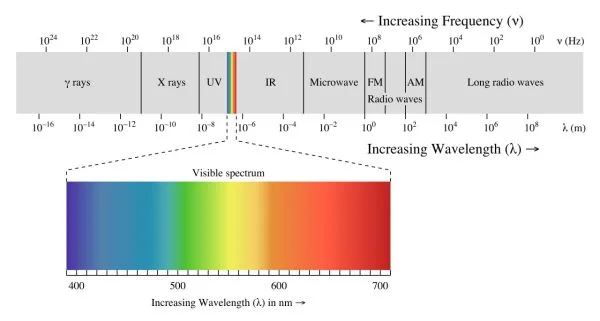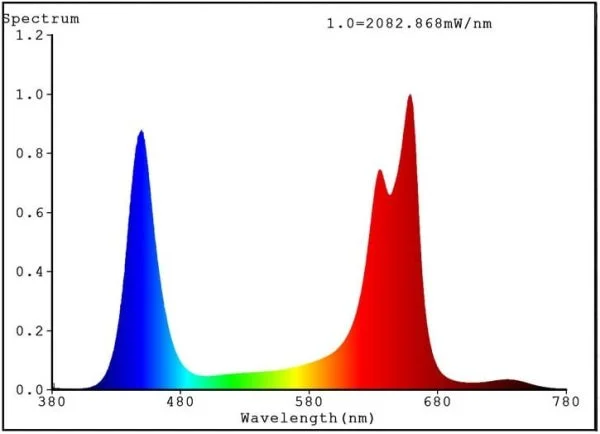How does chromatography affect the growth of cannabis plants?
Author: Mars Grow
Release time: 2024-04-20 15:25:39
View number: 201
Adequate lighting is the most important factor to consider when growing cannabis plants.
Just like using cannabis nutrients, plants should be provided with good, high-quality light to allow them to grow normally.
To generate more cannabis sprouts, light is your secret weapon.
Using the right wavelengths of light also ensures that the cannabis buds are as effective as possible.
Cannabis is very sensitive to light and requires adjusting the light intensity, color, and frequency according to each stage of its growth.
This simulates the natural conditions found in nature.
This is why indoor growers tend to purchase full-color lighting for their plants to maximize their ability to germinate and grow.
In this article, we will answer the question of how light chromatography affects cannabis growth. Let's get started, shall we?
chromatography of light
When we see a rainbow, we are amazed at the beauty of all the colors. When white light is dispersed through water vapor, it forms a rainbow. This refracted light breaks down into various colors, forming white light. Each color in the rainbow has a wavelength.
These different wavelengths of visible light make up the colors we see. The visible light spectrum encompasses wavelengths ranging from 700 nm at the red end to 400 nm at the sharp edge. "Nm" stands for nanometers.

Objects have color because they absorb certain wavelengths of light while reflecting others.
For example, green leaves absorb all colors of light except green. Green wavelengths are reflected and we perceive them as colors.
Black and white are not considered colors, they refer to shadow and brightness. Black objects absorb all the visible spectrum, while white objects reflect it. That's why dark objects heat up faster on sunny days, they absorb more light energy and emit it as heat.
When growing indoors, you try to simulate perfect outdoor conditions. Every stage of plant growth, from the vegetative stage to the flowering stage, is exposed to various wavelengths of light to maintain the process of photosynthesis and bud formation.
UV spectroscopy
Ultraviolet or UV light has a wavelength range of 10nm to 400nm; this type of light energy is known to cause harm to the human body when exposed to human skin. Our bodies respond by tan the skin to prevent the light from further damaging skin cells.
Large amounts of ultraviolet light can also damage plants.
When growing cannabis, there are two types of ultraviolet light: UV-A (315-400nm) and UV-B (280-315nm).
UV-A is thought to be harmful to the cannabis plant. Regardless of its harm (not just to cannabis, but to other plants as well), plants have evolved a natural defense mechanism against UV rays by secreting enzymes, antioxidants and chemicals to prevent more damage. However, at higher concentrations, it can still cause damage to the plant.
On the other hand, UV-B is much less harmful to cannabis plants than UV-A. UV-B light appears to have a positive effect on the growth of cannabis plants. More research needs to be done to determine the exact benefits, but many growers swear that feeding plants UV-B light improves growth, flavor, and potency.
Now there are plant growth lights that can provide full-spectrum visible light; also include infrared and UV-B.
There is a third form of ultraviolet light, called UV-C. In nature, UV-C light is absorbed by ozone before reaching the earth and is not very useful for plant growth. UV-C light harms plants and kills microorganisms and bacteria.
Blue Spectrum
The blue spectrum is very important for the growth of cannabis plants. This wavelength is located between 450nm and 495 nm. This color of light is best used during the germination and vegetative growth stages as it promotes the rapid growth and development of the plant.
There is plenty of energy in outdoor blue light in the spring. This is a natural trigger for new growth. It also helps cannabis plants grow strong stems and helps photosynthesis, which keeps the cannabis plant stable. Plants that often lack blue light, become pale or yellow, and often fall weakly under the weight.
Blue light can be easily and quickly replenished with cool white fluorescent bulbs, but most LEDs and alternative growth lamps will also provide blue light.

